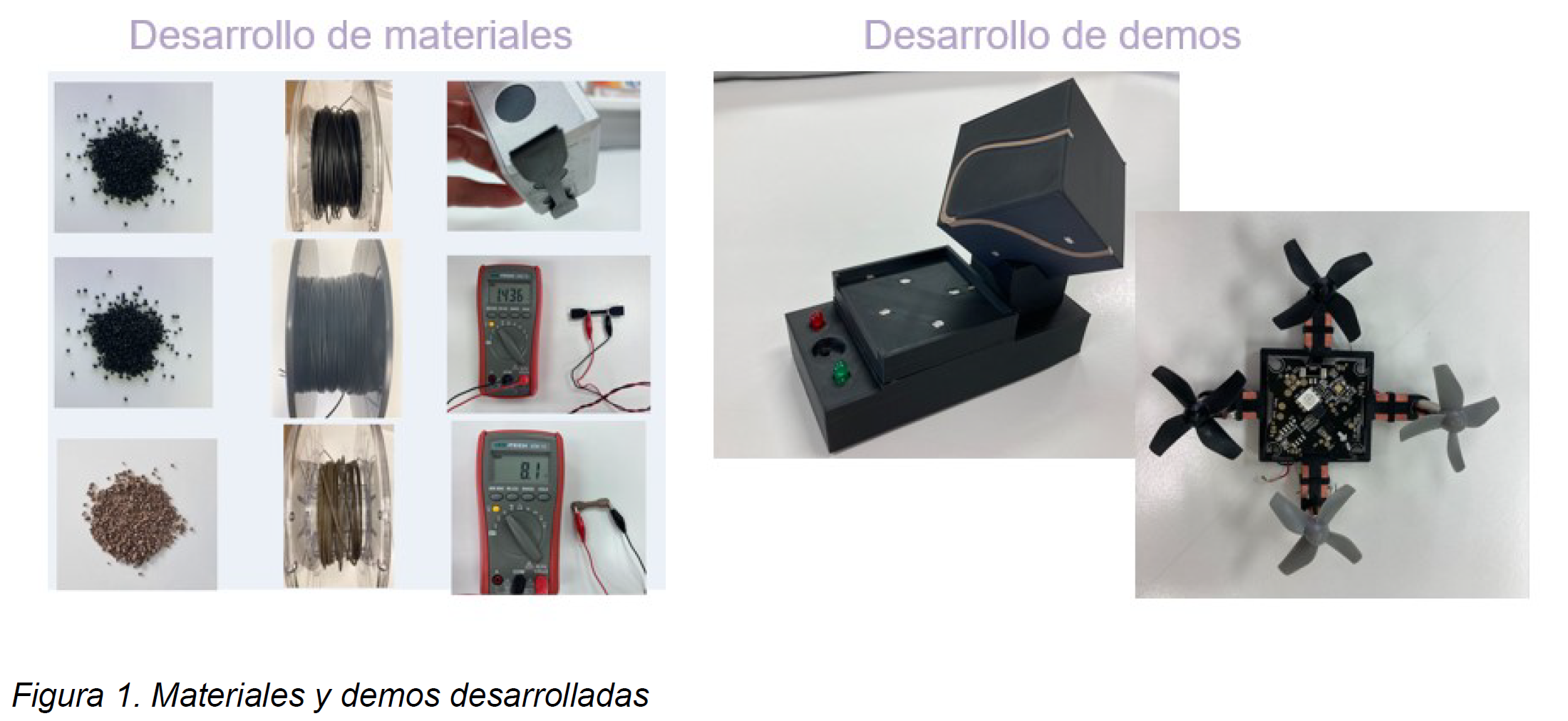AMELEC
Formulating and developing functional materials using nanoparticles and researching additive manufacturing processes for using embedded electronics in plastic parts
Links:
Formulating and developing functional materials using nanoparticles and researching additive manufacturing processes for using embedded electronics in plastic parts
Links:
Artículos científicos
Comunicaciones en congresos
The general goal of the project was to research new materials and additive manufacturing processes to incorporate embedded electronics in manufactured plastic parts.
Along general lines, the results of the project are seen as very promising. The goals set in the paper have been achieved. New kinds of plastic material (conductive and magnetic) for 3D printing were obtained that can include electronics in a single printing process.
The work centred on obtaining an ABS conductive filament and a PLA based magnetic thread. It was possible to print the filaments using FDM. Insofar as the conductive filament, it was possible to create functional test-tubes with good electric properties. Once a conductive filament with ABS was obtained, it was possible to dope another polymer used in the automotive industry, ASA, that has very good conductive properties. Insofar as the magnetic thread, it was possible to get a magnetic response without having to magnetise. However, it is necessary to modify the formulation if you want to detect it with extremely thin threads.
Work was done on the structural design and thermal simulation. After doing the 2D simulation, it was possible to simulate a 3D part, specifically a cube, with complex modelling.
It was possible to obtain parts with embedded electronics where the potential of this technology and the materials developed is shown. Several demonstration items, like a functional cube and a large drone, were fabricated where the developments achieved in the project were incorporated.
Work was done on a life cycle analysis, using the cube as a final piece. The recommendations obtained have been implemented in work methodologies.

It was possible to show that this kind of manufacturing makes it possible to embed electronics in plastic parts, and geometries can be achieved that could not be done with other technologies, with a single manufacturing process. That means a part with the functional material can be obtained from a digital file. Additive manufacturing must go hand in hand with the development of new materials, so new functionalities can be incorporated into the parts.
The NAITEC-UPNA consortium worked on the project intensely. Both entities collaborated closely and achieved the goals set for the project, which were very ambitious.